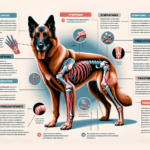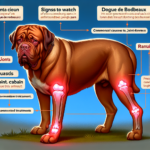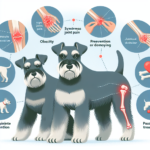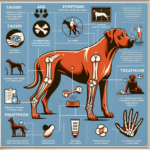Pharaoh Hound Joint Pain: Causes, Symptoms, Prevention, and Treatment
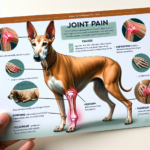
Introduction
The Pharaoh Hound is a breed that exudes elegance and grace, known for its sleek appearance and keen hunting abilities. Originating from Malta, this ancient breed is believed to have been brought to the island by Phoenician traders around 1000 BC. Pharaoh Hounds are medium-sized dogs with a distinctive reddish-brown coat and striking amber eyes. They are known for their agility, speed, and keen sense of smell, making them excellent hunters and companions.
Like many breeds, Pharaoh Hounds are prone to certain health issues, with joint pain being a significant concern. Joint health is crucial for maintaining the breed’s active lifestyle and overall well-being. Understanding the causes, symptoms, prevention, and treatment of joint pain in Pharaoh Hounds is essential for owners to ensure their pets lead a healthy and comfortable life.
Breed-Specific Joint Pain Risks
Genetic Predisposition
Pharaoh Hounds, like many purebred dogs, have a genetic predisposition to certain joint-related issues. Hip dysplasia, a condition where the hip joint doesn’t fit properly into the hip socket, is one of the most common genetic issues affecting this breed. Elbow dysplasia, where the elbow joint is malformed, can also occur. Both conditions can lead to arthritis and chronic pain if not addressed early.
Age-Related Risks
As Pharaoh Hounds age, the risk of developing joint pain increases. The breed typically shows signs of aging around 7-9 years old, although this can vary. Older dogs are more susceptible to arthritis, a degenerative joint disease that causes inflammation and pain. Regular veterinary check-ups are crucial to monitor joint health as the dog ages.
Activity Level and Joint Stress
Pharaoh Hounds are known for their high energy levels and love for physical activity. While regular exercise is essential for their overall health, excessive or inappropriate exercise can lead to joint stress and injuries. Activities like running, jumping, and playing on hard surfaces can exacerbate joint issues, especially if the dog is not properly conditioned or warmed up.
Common Symptoms of Joint Pain in Pharaoh Hounds
General Symptoms
- Limping or favoring one leg
- Stiffness, especially after rest
- Reluctance to move, jump, or climb stairs
- Swelling around the joints
- Decreased activity or interest in play
- Whining or showing signs of discomfort when touched
Breed-Specific Symptoms
In Pharaoh Hounds, joint pain may manifest as a reluctance to engage in activities they once enjoyed, such as running or chasing. Owners may also notice a change in the dog’s gait, with a more pronounced limp or stiffness. Due to their lean build, any swelling around the joints may be more noticeable compared to other breeds.
When to Consult a Vet
If you observe any of the above symptoms in your Pharaoh Hound, it is essential to consult a veterinarian promptly. Early diagnosis and intervention can prevent further deterioration and improve the dog’s quality of life. Regular veterinary check-ups are also crucial for early detection of joint issues.
Preventive Measures for Joint Health
Exercise Recommendations
Regular, moderate exercise is vital for maintaining joint health in Pharaoh Hounds. Activities like walking, swimming, and controlled play are excellent options. Avoid high-impact activities like jumping or running on hard surfaces, which can stress the joints. Ensure your dog is properly warmed up before engaging in more strenuous activities.
Dietary Suggestions
A balanced diet rich in essential nutrients is crucial for joint health. Consider incorporating foods or supplements that contain glucosamine, chondroitin, and omega-3 fatty acids, which support joint function and reduce inflammation. Consult your veterinarian for specific dietary recommendations tailored to your dog’s needs.
Weight Management
Maintaining a healthy weight is essential to reduce stress on the joints. Pharaoh Hounds are naturally lean, but overfeeding or lack of exercise can lead to weight gain. Monitor your dog’s weight regularly and adjust their diet and exercise routine as needed to keep them at an optimal weight.
Early Screening and Monitoring
Regular veterinary check-ups and early screening for joint issues can help catch problems before they become severe. X-rays and other diagnostic tools can identify conditions like hip or elbow dysplasia early, allowing for timely intervention. Discuss with your veterinarian about the best screening schedule for your Pharaoh Hound.
Treatment Options for Joint Pain
Non-Surgical Treatments
Non-surgical treatments for joint pain in Pharaoh Hounds include medications, physical therapy, and lifestyle adjustments. Anti-inflammatory drugs and pain relievers can help manage symptoms, while physical therapy can improve joint function and mobility. Lifestyle changes, such as providing a comfortable bed and avoiding high-impact activities, can also alleviate pain.
Surgical Options
In severe cases, surgical intervention may be necessary. Common surgeries for joint issues include hip replacement, arthroscopy, and joint fusion. These procedures can significantly improve the dog’s quality of life, but they come with risks and require a thorough discussion with your veterinarian.
Alternative Therapies
Alternative treatments like acupuncture, hydrotherapy, and massage can also benefit Pharaoh Hounds with joint pain. Acupuncture can help reduce pain and inflammation, while hydrotherapy provides low-impact exercise that strengthens muscles without stressing the joints. Massage can improve circulation and reduce muscle tension around the affected joints.
Lifestyle and Management Tips
Daily Care Routine
A consistent daily care routine can help manage joint pain in Pharaoh Hounds. This includes regular, moderate exercise, a balanced diet, and weight management. Providing a comfortable sleeping area with an orthopedic bed can also alleviate joint discomfort.
Modifying the Home Environment
Making your home more accessible for a dog with joint pain can significantly improve their quality of life. Consider installing ramps to help them navigate stairs or get onto furniture. Ensure their living area is free of slippery surfaces that could cause falls. Providing a warm, comfortable bed can also help soothe aching joints.
Long-Term Management
Long-term management of joint pain involves regular veterinary check-ups, ongoing physical therapy, and maintaining a healthy lifestyle. Monitoring your dog’s condition and adjusting their care routine as needed can help them stay active and happy despite joint pain.
FAQs About Pharaoh Hounds and Joint Pain
What are the early signs of joint pain in Pharaoh Hounds?
Early signs of joint pain include limping, stiffness, reluctance to move, and decreased activity levels. If you notice any of these symptoms, consult your veterinarian promptly.
Can joint pain in Pharaoh Hounds be prevented?
While genetic predispositions cannot be entirely prevented, maintaining a healthy weight, providing regular exercise, and ensuring a balanced diet can significantly reduce the risk of joint pain. Early screening and monitoring are also crucial for early detection and intervention.
Are there specific exercises that are better for Pharaoh Hounds with joint pain?
Low-impact exercises like walking and swimming are ideal for Pharaoh Hounds with joint pain. These activities help maintain muscle strength and joint mobility without causing excessive stress on the joints.
What dietary supplements can help with joint health in Pharaoh Hounds?
Supplements containing glucosamine, chondroitin, and omega-3 fatty acids can support joint health and reduce inflammation. Always consult your veterinarian before adding any supplements to your dog’s diet.
When should I consider surgery for my Pharaoh Hound’s joint pain?
Surgery should be considered when non-surgical treatments are no longer effective, and the dog’s quality of life is significantly impacted. Discuss the risks and benefits of surgical options with your veterinarian to make an informed decision.
Conclusion
Joint pain is a common concern for Pharaoh Hounds, but with proper care and attention, it can be managed effectively. Understanding the causes, symptoms, prevention, and treatment options is crucial for ensuring your dog’s joint health. Regular veterinary check-ups, a balanced diet, appropriate exercise, and early screening can help prevent and manage joint issues. By taking proactive measures, you can ensure your Pharaoh Hound leads a happy, active, and pain-free life.

